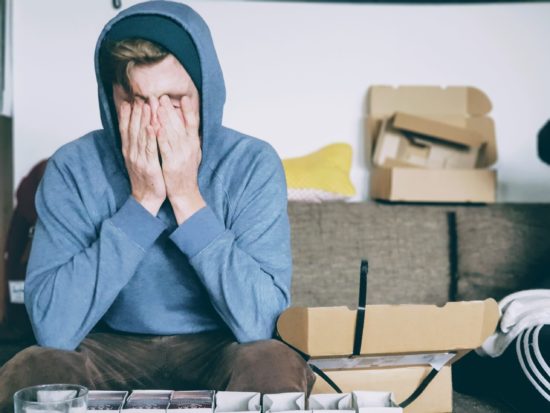
Childhood is supposed to be a time of carefree innocence when the trials and tribulations of the adult world don’t enter your sphere of consciousness. For far too many children and teens, however, those precious years end much too soon if they ever occur at all.
The simple fact is that, no matter how we may try to shield them, we live in an increasingly traumatic world. From social issues and natural disasters to global pandemics and economic collapse, recent years have brought with them hardships whose effects continue to reverberate through our children’s lives.
Now more than ever, children and teens are at risk for developing significant psychiatric disorders such as depression and anxiety. Few people realize, though, that an increasing number of kids today are experiencing a disorder once largely associated only with combat veterans: PTSD.
What is PTSD?
Post-traumatic stress disorder (PTSD) is a psychiatric condition resulting from the experience of trauma. Trauma has often been associated with military combat, and because of this, we usually think of military veterans when we think of PTSD. Trauma can take many forms, however, ranging from domestic or sexual abuse to the prolonged stress of housing and food insecurity. Prolonged stress, regardless of whether it derives from exposure to violence or from extreme financial hardship, has shown to alter brain structures and neurochemical processes.
This is particularly true in vulnerable individuals or those for whom the traumatic experience is particularly severe or long-lasting. Studies suggest that nearly 4% of adults in the United States have some form of PTSD, while the rates for children and teens may be even higher.
More than 40% of all children and teens are estimated to have suffered at least one trauma in their lifetime, and up to 6% of boys and 15% of girls are thought to have developed PTSD as a result. This may range from the experience of domestic abuse, of violence within the community, or of poverty and housing insecurity, such as that which became pervasive during the Great Recession.
And the impacts on these young lives can be debilitating. PTSD involves not only extreme anxiety but also depression, intrusive thoughts, social isolation, flashbacks, and significant difficulty with daily functioning.
Associated Risks
PTSD does more than cause severe emotional distress at the moment. It also exacts a potentially devastating long-term toll. There is a strong connection, for instance, between PTSD and involvement in the criminal justice system.
Even worse than adulthood spent behind bars is the reality that many of these young PTSD victims will not reach adulthood at all. Adolescents with PTSD attempt or complete suicide at a far higher rate than the general population. For many, trying to commit suicide may be a cry for help in dealing with an emotional pain they can’t otherwise understand or put into words. For others, it may be seen as the only escape from a tortured life.
What To Do
As devastating as PTSD may be, there is hope. A combination of medication and talk therapy has been shown to be highly effective in the treatment of the disorder. For patients who may not be tolerant of traditional psychotropic medications, or for those who may require a bit more support in dealing with their stress, depression, or anxiety, CBD-based supplements can potentially be a tremendous help. While they shouldn’t be used without a doctor’s or therapist’s supervision, as a part of a larger treatment regime, these supplements can be a safe and effective option for relieving some of PTSD’s most debilitating symptoms.
Getting help for your PTSD isn’t just about finding the right doctor, effective medications, and safe and proven supplements. It’s also about changing your behavior, practicing self-care, and doing the things that give you peace and joy.
Consider, for example, the immense benefits of art therapy. When you are coping with trauma, art can be a powerful outlet for expressing those difficult emotions that might otherwise manifest in your PTSD symptoms. Even when you can’t express your anger or your fear in words, you can still purge them through your drawings and paintings or even through music or dance.
The most important thing is to discover whatever safe outlet works to help you release those toxic memories, to purge those caustic feelings. The more you release those memories and hurts, the less power they have to hurt you.
The Takeaway
PTSD isn’t just a scourge that combat veterans must face. Nowadays, our children are fighting wars of their own. From poverty to violence, today’s teens are experiencing trauma like never before and rates of PTSD are skyrocketing. This puts rising generations at heightened risk of incarceration and suicide. But PTSD doesn’t have to rob our children of their future. From medications and counseling to art therapy, there are ways that our kids can get their lives back. There are things we can do to ensure that our young ones live the healthy and happy lives they deserve.






